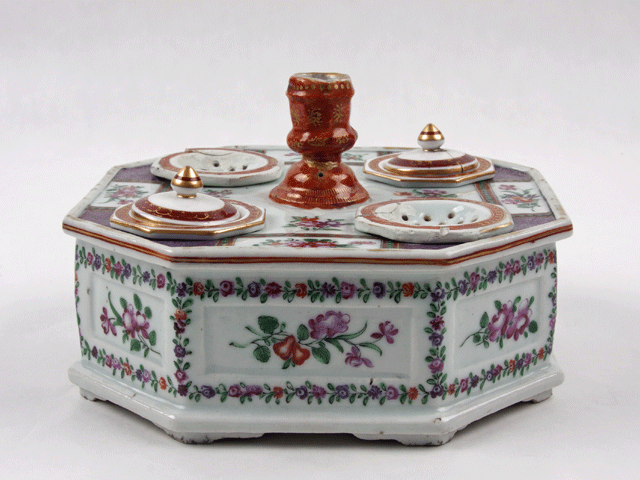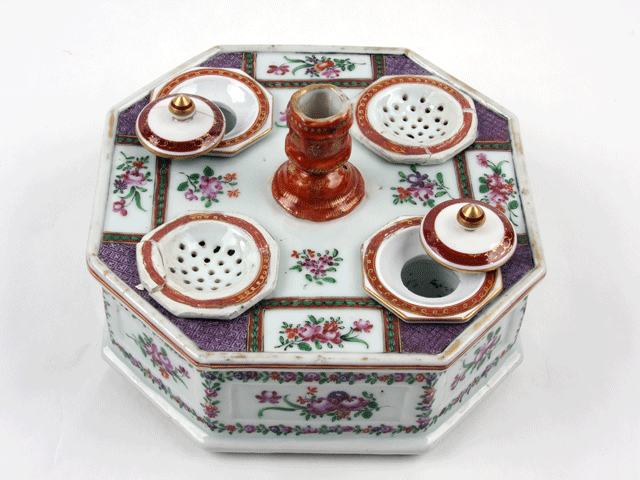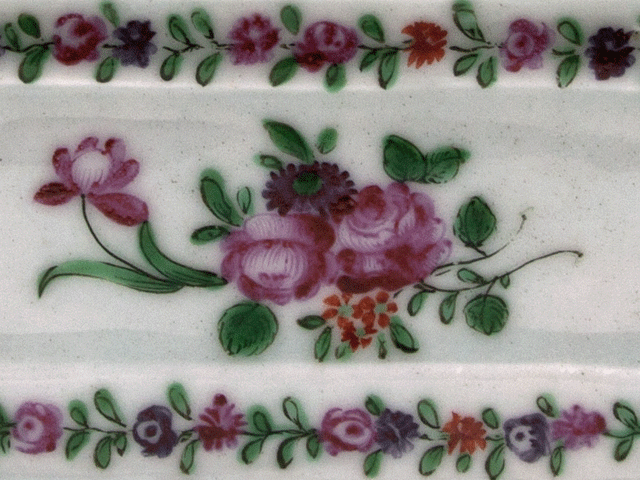
2012.91.251, ink stand; Qing dynasty, late A.D. 1700s
Eason Eige Collection; photo by T. Ocken

2012.91.251, ink stand; Qing dynasty, late A.D. 1700s
Eason Eige Collection; photo by T. Ocken
Back when the U.S. Declaration of Independence was being drafted, a wealthy
family in the Colonies might well have an ink stand such as this one.
The user could dip a quill pen into one of two ink pots with lids.
Two shakers for blotting sand. (Blotting paper wasn't developed
as a commercial product until the mid-1800s.) The candlestick at the center
would have come in handy if the writer was writing at night. The photo
below, taken from a different angle, may make it easier to distinguish
the various parts of the ink stand.

Photo by T. Ocken
Ink stands for quill pens were a thoroughly Western form (the Chinese used neither) but to meet global demand, European-made ink stands were sent to China to be copied. The potters of Jingdezhen then created ink stands out of porcelain, and artists in Guangdong added the painted designs. From there such pieces went out to the world, including in ships of the East India Company.
The
collector's term "famille rose" refers to the pink color featured
on many pieces of this time. As is typical of higher-end pieces, a closer
look rewards the eye with tiny hand-painted details—as
you can see in the close-up provided below.

Photo by T. Ocken
See source code for copyright information. Page last revised on March 4, 2016. Please report problems to toh@unm.edu